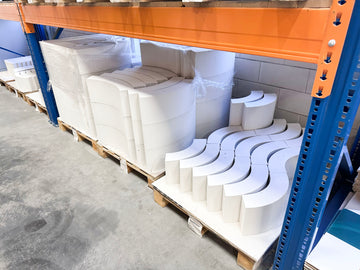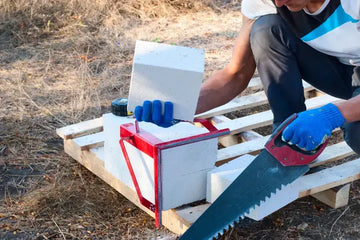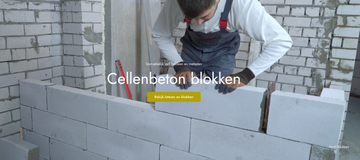Placing a retaining wall with aerated concrete blocks? Comfortable!
by Marco Janssen on Jul 06, 2023

As a builder you are always looking for efficient and simple ways to realize constructions. Placing a retaining wall with aerated concrete blocks is such a method that is both easy and effective. In this article we will discuss the advantages and steps of installing a retaining wall with aerated concrete blocks.
What are aerated concrete blocks?
Aerated concrete blocks, also known as Ytong or aerated concrete, are lightweight concrete building blocks that consist of cement, lime, sand and water. They have a porous structure filled with small air bubbles, making them lightweight yet strong and insulating.
These properties make aerated concrete blocks ideal for building interior walls, partition walls and therefore also retaining walls. They are easy to work with and offer several advantages over other materials such as traditional bricks or drywall.
Advantages of installing a retaining wall with aerated concrete blocks
1. Insulation: Aerated concrete blocks naturally have a high insulation value. This means that they retain heat well and are sound-insulating. By installing a retaining wall with aerated concrete blocks, you can improve the energy efficiency of a room and reduce noise nuisance.
2. Easy installation: Placing a retaining wall with aerated concrete blocks is relatively easy and does not require specialized skills or tools. The blocks can be easily cut to size and fixed with special glue or mortar. This makes the process fast and efficient.
3. Flexibility: With aerated concrete blocks you can easily create the desired shape and dimensions of the retaining wall. They can be adapted to any space or design, giving you complete flexibility in realizing your project.
How do you install a retaining wall with aerated concrete blocks?
To install a retaining wall with aerated concrete blocks, follow the steps below:
- Determine the location and dimensions of the retaining wall.
- Prepare the surface by cleaning it and leveling out any irregularities.
- Cut the aerated concrete blocks to size with a saw or a special cutter.
- Wet the aerated concrete blocks before placing them. This ensures better adhesion of the adhesive or mortar.
- Apply glue or mortar to the substrate and place the first layer of aerated concrete blocks.
- Regularly check with a spirit level whether the blocks are straight.
- Repeat steps 5 and 6 until you have reached the desired height of the wall.
- Let the glue or mortar dry according to the manufacturer's instructions.
- Finish the surface of the front wall with stucco, paint, wallpaper, etc., of your choice.
It is important to remember that every construction job is unique and may require additional steps. Always consult the building instructions and carefully follow all safety guidelines when installing a retaining wall with aerated concrete blocks.
Conclusion
Placing a retaining wall with aerated concrete blocks is indeed easy! The lightweight, insulating and easy-to-process properties make aerated concrete blocks an ideal choice for builders. Follow the right steps and you will be able to quickly and efficiently install a retaining wall that meets your requirements and specifications.
Whether you are looking for insulation, sound insulation or just a flexible construction method, aerated concrete blocks are a reliable solution. Try it out for yourself and experience how easy it is to install a retaining wall with aerated concrete blocks!



